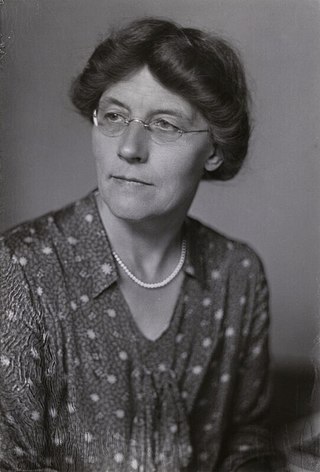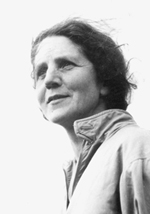Related Research Articles

Rothamsted Research, previously known as the Rothamsted Experimental Station and then the Institute of Arable Crops Research, is one of the oldest agricultural research institutions in the world, having been founded in 1843. It is located at Harpenden in the English county of Hertfordshire and is a registered charity under English law.

Frank Yates FRS was one of the pioneers of 20th-century statistics.

Harpenden is a town and civil parish in the City and District of St Albans in the county of Hertfordshire, England. The population of the built-up area was 30,240 in the 2011 census, while the population of the civil parish was 29,448. Harpenden is a commuter town, with a direct rail connection to Central London.

Sir John Bennet Lawes, 1st Baronet, FRS was an English entrepreneur and agricultural scientist. He founded an experimental farm at his home at Rothamsted Manor that eventually became Rothamsted Research, where he developed a superphosphate that would mark the beginnings of the chemical fertilizer industry.

Sir Joseph Henry Gilbert was an English chemist, noteworthy for his long career spent improving the methods of practical agriculture. Along with J.B. Lawes, he conducted experiments at Rothamstead for forty years. One of the key findings of Lawes and Gilbert was that cereal crops took up nitrogen from the soil, contrary to the ideas of Justus von Liebig who held that it was obtained only from the air. Their work made Rothamstead a leading centre of agricultural research. Gilbert became a fellow of the Royal Society in 1860.
Norman Wingate Pirie FRS, was a British biochemist and virologist who, along with Frederick Bawden, discovered that a virus can be crystallized by isolating tomato bushy stunt virus in 1936. This was an important milestone in understanding DNA and RNA.

Moniliophthora perniciosa is a fungus that causes "witches' broom disease" (WBD) of the cocoa tree T. cacao. This pathogen is currently limited to South America, Panama and the Caribbean, and is perhaps one of the best-known cocoa diseases, thought to have co-evolved with cocoa in its centre of origin.

Cacao swollen shoot virus (CSSV) is a plant pathogenic virus of the family Caulimoviridae that primarily infects cacao trees. It decreases cacao yield within the first year of infection, and usually kills the tree within a few years. Symptoms vary by strain, but leaf discoloration, stem/root swelling, and die-back generally occur. The virus is transmitted from tree to tree by mealybug vectors. It was first discovered in Ghana in 1936, and is currently endemic in Togo, Ghana and Nigeria. Over 200 million trees have already been claimed by this disease, which has prompted Ghana to launch the most ambitious and costly eradication effort of any country in the world against a viral plant disease.
Robert Kenneth Callow, FRS was a British biochemist. He worked at the National Institute for Medical Research in Hampstead and Mill Hill, where his work on steroids included contributions to the isolation and characterisation of vitamin D, and the synthesis of cortisone from naturally occurring steroids. After he retired from the NIMR in 1966 he worked on insect pheromones at Rothamsted Experimental Station until 1971.

Winifred Elsie Brenchley OBE, DSc (Lond), FLS, FRES (1883–1953), an agricultural botanist who worked at the Rothamsted Research Station. Along with Katherine Warington, she demonstrated the role of boron as an essential micronutrient for plants. She was the first woman in the UK to break into the male-dominated sphere of agricultural science. She has been described as "perhaps Britain's leading authority on weeds in the early twentieth century".
Katherine Warington was a botanist and the first person to show that boron, as boric acid, was essential for the healthy growth of plants.
Lionel Roy Taylor was a British ecologist, president of the British Ecological Society 1984/85, and editor of the Journal of Animal Ecology.

Eugene Davenport was an American academic and agriculturist from Michigan. Davenport studied at the undergraduate and graduate level at Michigan State Agricultural College. He taught at the school for two years, then briefly led an agricultural college in Brazil. When he returned to the U.S. he accepted he position as dean of the University of Illinois College of Agriculture. He is credited with greatly growing the institution in his 27 years and was named vice president of the university from 1920 to 1922. He retired and wrote a memoir on his farm until his death.
Cocoa necrosis virus (CoNV) is a plant pathogenic virus of the genus nepovirus that infects Theobroma cacao en natura causing cacao necrosis disease. CoNV is considered synonymous with Strain S of cacao swollen shoot virus. Unlike Cacao swollen shoot virus, it is not transmitted by mealybugs nor vectored by aphids, beetles, or leafhoppers that also commonly infest cacao. It is serologically, distantly related to Tomato black ring virus and very distantly related to Grapevine chrome mosaic virus.

Mary Dilys Glynne was a British plant pathologist and mountaineer.

Frances Joan Harvey Moore, OBE was a British plant pathologist, science administrator and conservationist.

Robert Warington, Jr. was an English agricultural chemist, known for his research and publications on the chemistry of phosphates and nitrates in agricultural soils.
Sir Frederic Charles Bawden was an English plant pathologist and virologist who worked at Rothamsted Experimental Station from 1936 and served as a director from 1958 until his death.

Stephen Denis Garrett was a British plant pathologist and mycologist who did pioneering work on soil-borne pathogens, root pathology and soil ecology. He was the first to apply ecological concepts to interactions in the soil. Much of his research used as a model system the fungus Gaeumannomyces graminis, which causes the important cereal disease take-all. He also studied Armillaria root rot of trees, among other plant diseases.
Philip Herries Gregory was a British mycologist and phytopathologist. He established an international reputation as a pioneer of aerobiology and a leading expert on the liberation and dispersal of fungal spores and their relation to plant diseases and to human respiratory diseases. In 1957 he was elected to a one-year term as president of the British Mycological Society.
References
- 1 2 Ashford, Mildred. "Margaret Holden ( c1922 - 1998)". Harpenden History. Retrieved 8 March 2016.
- ↑ Holden, Margaret (1946). "Studies on Pectase". Biochem. J. 40 (1): 103–8. doi:10.1042/bj0400103. PMC 1258302 . PMID 16747955.
- ↑ Holden, Margaret (1979). "The Larger Fungi of Rothamsted, Part 2". Bulletin of the British Mycological Society. 13 (2): 107–109. doi:10.1016/S0007-1528(79)80011-5.
- ↑ Holden, Margaret. "A Brief History of Rothamsted Experimental Station from 1843 to 1901". Harpenden History. Retrieved 8 March 2016.